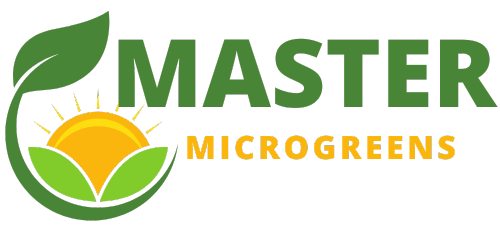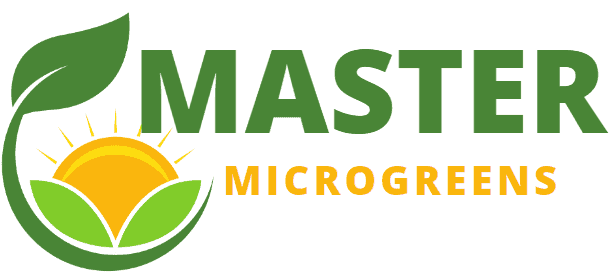It is recommended to wash microgreens before eating them. While microgreens are typically grown in controlled and clean environments, rinsing them under cool water helps remove any dirt, debris, or potential contaminants that may be present. This simple step also helps to enhance the freshness and flavor of the microgreens by removing any residual growing medium. After washing, gently pat the microgreens dry with a paper towel or allow them to air dry before using or storing.
What You'll Learn
Why You Should Wash Microgreens
Washing your microgreens may seem like a chore, but you won’t regret it when they taste even better! Buying microgreens can be tricky, so make sure to follow these tips: buy from a trusted source, avoid wilted or discolored greens, and look for crisp stems.
But once you get them home, don’t forget to wash them! Washing the microgreens before eating is important for several reasons. It helps remove dirt and bacteria that can make you sick. It also removes any pesticides or other chemicals that may have been used on the plants while they were growing. Plus, washing will help bring out their flavor and keep them fresh longer.
When you do wash your microgreens, use cool water and be careful not to damage the delicate leaves or stems. Gently swish the water around the greens in a bowl or colander until all of the dirt has been removed–this should only take a minute or two. Then transfer them onto paper towels or cheesecloth to dry before serving. If you want an extra layer of protection against bacteria, add one teaspoon of vinegar per cup of water when washing your greens.
Freshly washed microgreens are amazing—their color will be brighter and crisper than they were before washing, plus there’s nothing quite like the flavor of freshly-washed produce! Adding microgreens into salads and sandwiches give dishes another level of nutrition too; many varieties contain more vitamins and minerals than mature vegetables do. Plus they add texture as well as visual appeal which makes meals extra special!
With all these advantages in mind, it’s easy to see why it’s important to wash your microgreens thoroughly before consuming them. So next time you purchase some tasty greens from the store or farmer’s market, don’t forget this little step—it could save you from illness while also making every meal just that much more delicious!
How to Wash Microgreens
Gently swishing the tiny greens in a shallow bowl of cool water will give you delicious, clean microgreens to enjoy. Washing microgreens is an essential cooking technique that shouldn’t be overlooked.
When done correctly, it can help preserve their flavor profiles and ensure they’re safe for consumption. To do this properly, fill a large bowl with cold water and add your microgreens to it. Gently agitate the water with your hands or a slotted spoon until all dirt and debris have been removed from the greens.
Then, carefully lift them out of the bowl and place them in a colander or on paper towels to drain off any excess water. Once they’re completely dry, you can store them in an airtight container or use them immediately for cooking.
It’s important to note that washing your microgreens too vigorously can damage them, so take care when doing so! For added flavor and nutrition, try adding some herbs or spices to the washwater before agitating it. This will help infuse each little green leaf with additional flavor as well as beneficial nutrients!
Finally, be sure to inspect each leaf for any bugs or other small critters before consuming. While rare, these things can sometimes find their way into bags of pre-washed greens!
Different Types of Microgreens
Microgreens come in many varieties, from broccoli and arugula to kale and radish, offering a range of flavors and nutrients to enjoy. They are usually harvested between 7-14 days after sprouting and provide a unique flavor profile for salads, soups, sandwiches, or as a garnish.
Depending on the type of microgreen you’re growing, it will determine the harvesting techniques used — some may need to be cut off at soil level while others can simply be plucked off. The growing methods used for different types of microgreens will also vary depending on the variety being grown. Some require more light than others while some need more water or nutrient-rich soils.
For example, broccoli microgreens require direct sunlight, whereas lettuce microgreens do best in partial shade with moisture-packed soil for optimal growth. Once harvested, it’s important to wash your microgreens gently under cool water before eating them as this will help ensure you get rid of any dirt or pesticides that may have been on the greens during their growth cycle.
It’s also wise to store them in an airtight container until ready to consume so they stay fresh longer. You can use a colander or strainer for washing and pat dry with paper towels before storing them away. This way you can always have delicious microgreens on hand whenever you want!
With their array of colors, flavors, and nutritional benefits, there’s no doubt why so many people are turning towards these little greens as part of their meals!
Nutritional Benefits of Microgreens
Enjoying the vibrant colors and flavors of microgreens can also provide you with a plethora of health benefits. They’re rich in antioxidants, helping to reduce oxidative stress and inflammation. Microgreens contain higher amounts of vitamins and minerals than their mature counterparts. Their distinct taste differences can add flavor to any dish.
Microgreens have anti-cancer properties due to their high levels of phytonutrients like phenolic compounds, carotenoids, and flavonoids. These powerful compounds promote cell growth and help protect cells from damage caused by free radicals. Additionally, they may reduce the risk of chronic diseases such as heart disease and diabetes.
In addition to providing a range of health benefits, microgreens can also provide an excellent source of dietary fiber. This is important for digestion and maintaining a healthy gut microbiome. Eating microgreens is an easy way to get more nutrients into your diet without having to eat large amounts of food or make drastic lifestyle changes. Plus, you don’t need any special equipment or experience – just wash them gently under cool water before eating!
Potential Contamination Risks
When handling microgreens, you should take caution to avoid potential contamination risks. Microgreens are grown in soil or water that could contain bacteria and other contaminants, which poses a risk of disease transmission if not properly handled. Additionally, pesticide residue may be present on the plants even after washing due to their small size. Therefore, it’s important to wash them gently but thoroughly before eating them.
The best way to wash microgreens is under cool running water. Use your fingers or a soft brush to remove any dirt or debris from the leaves and stems. This will help reduce the risk of potential contamination from sources such as bacteria and pesticides. Do not soak your microgreens; this can cause them to become soggy and lose some of their nutritional value. Instead, use a gentle stream of water for a few seconds only.
It’s also important to dry your microgreens properly after washing them. Avoid using paper towels or fabric towels as these can harbor bacteria that can contaminate your greens. Instead, use a salad spinner with holes large enough for the microgreens to pass through without getting stuck inside it – this will remove excess moisture quickly and effectively while preserving their crispness and crunchiness when eaten raw or cooked later on.
No matter how careful you are when cleaning your microgreens, there’s always some risk of contamination from disease-causing organisms like E coli or Salmonella in addition to pesticide residue on the leaves themselves – so make sure you cook all your greens before consuming them if possible!
Storage and Preparation Considerations
To ensure the best flavor and nutrition when preparing microgreens, it’s important to consider how you store and prepare them. Microgreens are highly perishable and should be stored properly in an airtight container or bag in the refrigerator. For maximum freshness, use the microgreens within two days of purchase.
When ready to use, rinse them gently under cool water before eating. This will help remove any dirt or debris that may have accumulated during storage and transport. It is also important to note that some microgreen varieties are more delicate than others, so take care when cleaning them as they can easily become damaged if handled too roughly. Consider using a soft brush or cloth to lightly scrub away any dirt or debris without damaging the fragile leaves.
Additionally, avoid using soap on your microgreens as this could leave behind unpleasant flavors or residues from detergent chemicals which would not be desirable in your final dish. When purchasing pre-washed microgreens, check for any signs of discoloration or wilting which may indicate they were not washed properly prior to packaging.
If possible, ask about where the microgreens came from and how they were washed as these details can make a difference in quality. Be aware that some producers may not follow recommended washing techniques so it is always best to double check before consuming them raw. In order for your dish to truly shine with flavor and texture, proper storage and preparation techniques must be followed when working with microgreens.
Taking extra care when storing and cleaning them will ensure you get only the freshest ingredients for your meal every time!





